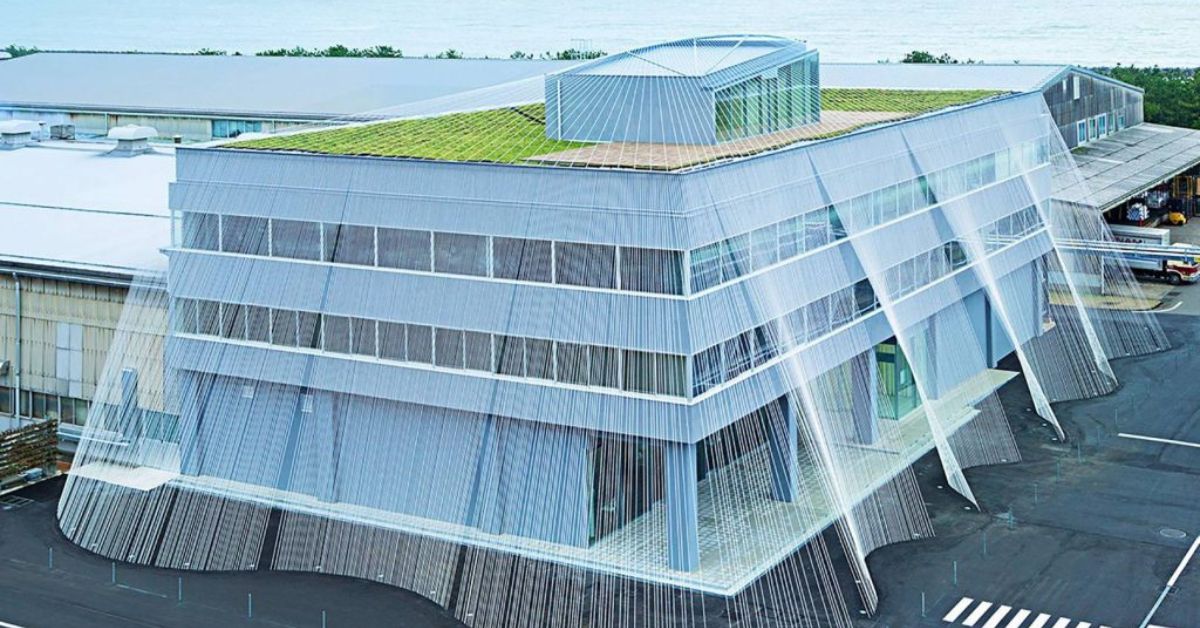REAL ESTATE
The Appeal of Walkability and Green Spaces in a Thriving Community

Location plays a major role in shaping daily life when searching for a new home. Beyond the house itself, the surrounding neighborhood influences convenience, lifestyle, and long-term value. Homebuyers in Venice are increasingly looking for communities that offer walkability and green spaces, recognizing the benefits they bring to both quality of life and property appreciation.
A Walkable Community Creates Everyday Convenience
Walking to essential services and entertainment reduces travel time and enhances the overall living experience. Homeowners can enjoy a more relaxed lifestyle instead of dealing with traffic or long commutes, knowing that errands and leisure activities are just a short walk away.
Walkability also fosters a stronger sense of community. Neighbors are more likely to interact, local businesses thrive, and outdoor spaces become vibrant gathering spots. These elements create a welcoming environment where homeowners feel connected to their surroundings.
The Role of Green Spaces in Everyday Well-Being
Access to green spaces adds another layer of appeal to a community. Parks, walking trails, and nature preserves provide exercise, relaxation, and outdoor recreation opportunities. Whether a morning jog on a scenic path or an afternoon at a neighborhood park, these spaces promote a balanced and healthy lifestyle.
Studies show that spending time in nature reduces stress and improves mental well-being. Homebuyers who prioritize green spaces recognize the benefits of having natural areas close to home, offering a retreat from the busyness of everyday life.
Beyond personal wellness, these spaces also enhance the beauty of a neighborhood. Well-maintained landscaping, tree-lined streets, and open green areas create a visually appealing environment that adds to a community’s charm.
How Walkability and Green Spaces Influence Home Value
Communities designed with walkability and green spaces in mind tend to see strong home values over time. Buyers are drawn to areas that offer both convenience and access to nature, making these neighborhoods desirable for resale.
Proximity to parks, walking trails, and public gathering spaces can increase property appreciation. Homeowners who invest in such communities often find that demand remains high, even as market conditions fluctuate.
Additionally, well-planned neighborhoods with green spaces and pedestrian-friendly features attract a diverse range of buyers. From young professionals to retirees, many people seek a balance of accessibility and outdoor enjoyment when choosing a place to live.
A Lifestyle That Blends Convenience and Nature
Combining walkability and green spaces creates a lifestyle supporting convenience and relaxation. Homebuyers looking for a neighborhood that offers easy access to daily needs while providing space to unwind will find that communities designed with these elements in mind offer the best of both worlds.
Living in an area where parks, trails, and local amenities are within reach encourages an active and social way of life. Whether enjoying an evening walk, biking to a favorite café, or meeting neighbors at a community event, these features enhance the homeownership experience.
Discover a Thoughtfully Designed Community in Venice
Vistera of Venice offers a thoughtfully planned community that blends modern convenience with outdoor beauty for those seeking a home in a walkable, nature-filled environment. With scenic surroundings and easy access to amenities, finding the perfect balance between lifestyle and home value has never been more enjoyable.
REAL ESTATE
Before You Renovate: Structural Pre-Inspection Checklist for Homeowners

Renovating your home can be an exciting venture, but it also comes with its set of challenges, especially when it involves the structural integrity of the building. Before you embark on transforming your space, a structural pre-inspection is crucial to ensure the safety and success of your renovation project. This checklist provides you with a comprehensive guide to assessing key structural aspects of your home with insights into how ProStruct can assist during this vital phase.
Understanding the Importance of Structural Pre-Inspection
A structural pre-inspection, integral to any renovation, involves a thorough examination of your home’s foundation, walls, beams, and other structural components. This inspection identifies any underlying issues that could affect the renovation’s feasibility or final outcome. Engaging experts like ProStruct ensures that your renovation rests on a safe, stable foundation.
Why Pre-Renovation Inspections are Critical
Renovations, particularly those that alter the layout or involve structural changes, can lead to unforeseen complications if existing issues are not identified beforehand. A structural analysis renovation ensures that the load-bearing walls are stable, no hidden water damage threatens the building’s integrity, and the existing structure can support new additions or alterations.
Key Elements of a Structural Pre-Inspection Renovation Checklist
When planning a renovation, your checklist should comprehensively cover all structural aspects that might impact your project. Here’s what to include:
1. Foundation Assessment
Ensure that there are no cracks, uneven settling, or moisture issues in your foundation. These could signify deeper structural problems that might require immediate attention before proceeding with renovations.
2. Roof and Attic Examination
Inspect the roof and attic for signs of distress, such as trusses or rafters that are misaligned or compromised. These areas can impact the overall structural stability of your home.
3. Wall and Flooring Integrity
Check walls for cracks or movement and floors for levelness and sturdiness. These elements are crucial for maintaining the structural integrity of the house during and after the renovation.
4. Basement and Crawlspace
Look for any water intrusion, mold growth, or structural decay in these areas. Issues here can spread to other parts of your home and cause major damage.
5. Load-Bearing Structures
Identify all load-bearing walls and structures. Any renovation that involves altering these areas must be done with utmost care to avoid compromising the building’s stability.
How ProStruct Can Help
At ProStruct, we specialize in structural inspections and evaluations designed specifically for renovation projects. Our team provides detailed structural reports, includes accurate calculations, and assesses potential impacts of planned changes on your home’s structure. Whether you need a foundation evaluation, wall inspection, or a comprehensive framing inspection, ProStruct ensures your renovation is planned on a solid structural base.
Services Offered by ProStruct:
- Plan Review and Structural Design: Before any renovation, having architectural plans reviewed by a structural engineer ensures compliance and safety.
- Site Inspections and Reports: Detailed inspections assess every aspect of your home’s structural integrity.
- Lateral Load Assessments: These are critical in areas prone to earthquakes or heavy winds, ensuring your home can withstand these forces.
Preparing for a Structural Pre-Inspection
To prepare for a structural pre-inspection:
- Clear Access: Ensure that all areas of your home are accessible for thorough inspection.
- Document Concerns: Note any visible issues or past problems and share these with your inspector.
- Consult a Professional: Structural engineering is complex and requires professional assessment. Consulting experts like ProStruct minimizes risks and pinpoints necessary repairs and modifications.
Considering a renovation project should begin with a detailed understanding of the current state of your home’s structure. A structural pre-inspection renovation checklist is a vital tool in planning and conducting renovations safely and effectively. With professional guidance from ProStruct, you can proceed confidently, knowing that your home is structurally sound and ready for its transformation.
Are you ready to ensure your renovation starts on the right foundation? Contact us today! to discuss your structural pre-inspection needs.
REAL ESTATE
Hurricane & Earthquake-Resistant Designs: New Engineering Techniques for High-Risk Zones

The U.S. construction industry faces growing challenges from natural disasters like hurricanes and earthquakes. Contractors and material suppliers must adapt to new engineering techniques that enhance building resilience in high-risk areas. With climate change increasing storm intensity and seismic activity, innovative designs are no longer optional—they’re essential.
Why Disaster-Resistant Construction Matters
Hurricanes and earthquakes cause billions in damages every year. For contractors and material suppliers, building resilient structures means:
– Reducing repair costs for property owners.
– Meeting stricter building codes in disaster-prone states.
– Improving safety for occupants.
New engineering techniques are making it easier to construct buildings that can withstand extreme forces.
Hurricane-Resistant Construction Techniques
- Wind-Resistant Roofing & Wall Systems
Hurricanes produce powerful winds that can tear off roofs and collapse walls. Contractors now use:
– Hurricane straps & clips – Metal connectors that reinforce roof-to-wall joints.
– Impact-resistant shingles – Made from polymer-modified asphalt to resist wind uplift.
– ICF (Insulated Concrete Forms) – Foam blocks filled with concrete for stronger walls.
- Flood-Proof Foundations
Storm surges and heavy rains lead to flooding. Solutions include:
– Elevated foundations – Raising homes on piers or stilts in flood zones.
– Permeable pavements – Allowing water drainage to reduce pressure on structures.
For outdoor projects, landscaping estimating services can help design drainage systems that prevent erosion and structural damage.
Impact-Resistant Windows & Doors
Flying debris is a major hazard. Contractors now install:
– Laminated glass – Holds together even when shattered.
– Storm shutters – Roll-down or accordion-style for added protection.
Earthquake-Resistant Construction Techniques
- Base Isolation Systems
This technique separates the building from ground movement using:
– Lead-rubber bearings – Absorb seismic energy.
– Sliding isolators – Allow the building to move independently of shaking ground.
- Reinforced Shear Walls & Cross Bracing
Steel and concrete reinforcements prevent collapse by:
– Shear walls – Thick walls that distribute seismic forces.
– Cross bracing – Diagonal steel beams for extra stability.
- Flexible Pipe & Utility Systems
Earthquakes can rupture gas and water lines. New solutions include:
– Swing joints – Allow pipes to bend without breaking.
– Automatic shutoff valves – Prevent gas leaks after a quake.
How Material Suppliers Can Support Resilient Construction
Suppliers play a key role by providing:
– High-strength concrete – For foundations and shear walls.
– Fiber-reinforced polymers (FRP) – Lightweight but strong alternative to steel.
– Seismic-resistant fasteners – Bolts and connectors that withstand shaking.
For large-scale projects, landscape estimating services ensure proper material calculations for retaining walls and other outdoor reinforcements.
The Future of Disaster-Resistant Construction
New trends include:
– Self-healing concrete – Repairs cracks automatically.
– AI-powered structural monitoring – Detects weaknesses before disasters strike.
– Modular construction – Prefab designs that meet strict resilience standards.
Conclusion
Contractors and material suppliers must stay updated on hurricane and earthquake-resistant techniques to build safer, longer-lasting structures. From wind-resistant roofing to seismic base isolators, innovation is transforming disaster-prone construction.
For outdoor projects, partnering with landscaping estimating services ensures accurate planning for resilient landscapes. By adopting these methods, the construction industry can reduce risks and protect communities from nature’s worst.
Final Note:
– Use landscape estimating services for precise material planning.
– Consult landscaping estimating services for drainage and erosion control in high-risk zones.
This approach keeps projects on budget while meeting safety standards. Stay ahead—build stronger!
REAL ESTATE
Supply Chain & Material Innovations: Onshoring Construction Materials

The U.S. construction industry is undergoing major changes due to supply chain disruptions, rising material costs, and the push for sustainability. Contractors and material suppliers are now focusing on onshoring construction materials—bringing production back to the U.S. to reduce delays and costs. At the same time, new material innovations are transforming how projects are built.
Why Onshoring Construction Materials Matters
For years, the U.S. construction industry relied heavily on imported materials like steel, lumber, and cement. However, global supply chain issues—such as shipping delays, tariffs, and geopolitical conflicts—have made imports unreliable and expensive.
Key Benefits of Onshoring:
✔ Faster Deliveries – No more waiting months for overseas shipments.
✔ Lower Costs – Reduced shipping and tariff expenses.
✔ Better Quality Control – U.S.-made materials often meet stricter standards.
✔ Supporting Local Economies – More jobs for American workers.
Many contractors now prefer suppliers who source materials locally, ensuring smoother project timelines. Accurate construction takeoff services help them plan better by estimating material needs early, avoiding last-minute shortages.
Material Innovations Changing Construction
While onshoring solves supply chain problems, new materials are making construction faster, stronger, and greener. Here are some breakthroughs:
- Mass Timber & Engineered Wood
Instead of traditional steel and concrete, builders are using cross-laminated timber (CLT)—a strong, lightweight, and sustainable alternative. It’s easier to transport and install, cutting project timelines.
- Self-Healing Concrete
Cracks in concrete can weaken structures. New self-healing concrete uses bacteria or special polymers to repair itself, extending a building’s lifespan.
- Recycled & Sustainable Materials
From recycled plastic bricks to low-carbon cement, eco-friendly materials help contractors meet green building codes while reducing waste.
- Graphene-Enhanced Materials
Graphene—a super-strong nanomaterial—is being mixed into concrete and steel, making them lighter yet more durable.
With these innovations, takeoff estimating services become crucial. They help contractors calculate exact material quantities, preventing waste and saving money.
How Contractors & Suppliers Can Adapt
- Partner with Local Suppliers
By sourcing materials within the U.S., contractors avoid import risks. Suppliers investing in domestic production will have a competitive edge.
- Use Digital Tools for Better Planning
Tools like construction takeoff services allow precise material measurements, reducing over-ordering and delays.
- Stay Updated on New Materials
Contractors who adopt innovative materials early can bid on more projects, especially those requiring sustainable solutions.
- Improve Inventory Management
With onshoring, lead times shorten, but contractors still need efficient tracking. Cloud-based software helps manage stock levels in real time.
The Future of U.S. Construction
The shift to onshoring construction materials is more than a trend—it’s a necessity. Paired with cutting-edge materials and smart planning tools like takeoff estimating services, contractors and suppliers can build faster, cheaper, and greener.
As demand grows for resilient and sustainable construction, those who embrace these changes will lead the industry.
Final Thoughts
The U.S. construction industry is evolving rapidly. By bringing material production back home and adopting new technologies, contractors and suppliers can overcome supply chain challenges. Tools like construction takeoff services ensure projects stay on budget and schedule.
-

 TECHNOLOGY2 years ago
TECHNOLOGY2 years agoElevating Game Day Eats: A Guide to Crafting Crowd-Pleasing Sliders
-

 ENTERTAINMENT2 years ago
ENTERTAINMENT2 years agowave_of_happy_: Your Ultimate Guide
-

 FASHION2 years ago
FASHION2 years agoGPMsign Fashion: Redefining Style with Purpose
-

 TECHNOLOGY1 year ago
TECHNOLOGY1 year agoTrader Joe’s Dayforce: Revolutionizing Workforce Management
-

 FOOD2 years ago
FOOD2 years agoAltador Cup Food Court Background: A Culinary Extravaganza Unveiled
-

 SPORTS2 years ago
SPORTS2 years agoScore Chaser Sporting Clays: A Thrilling Pursuit of Precision
-

 HOME IMPROVEMENT1 year ago
HOME IMPROVEMENT1 year agoWhat Kitchen Renovation Companies Offer Beyond Basic Remodeling
-

 NEWS2 years ago
NEWS2 years agoNyl2 Kemono: Unveiling the World
